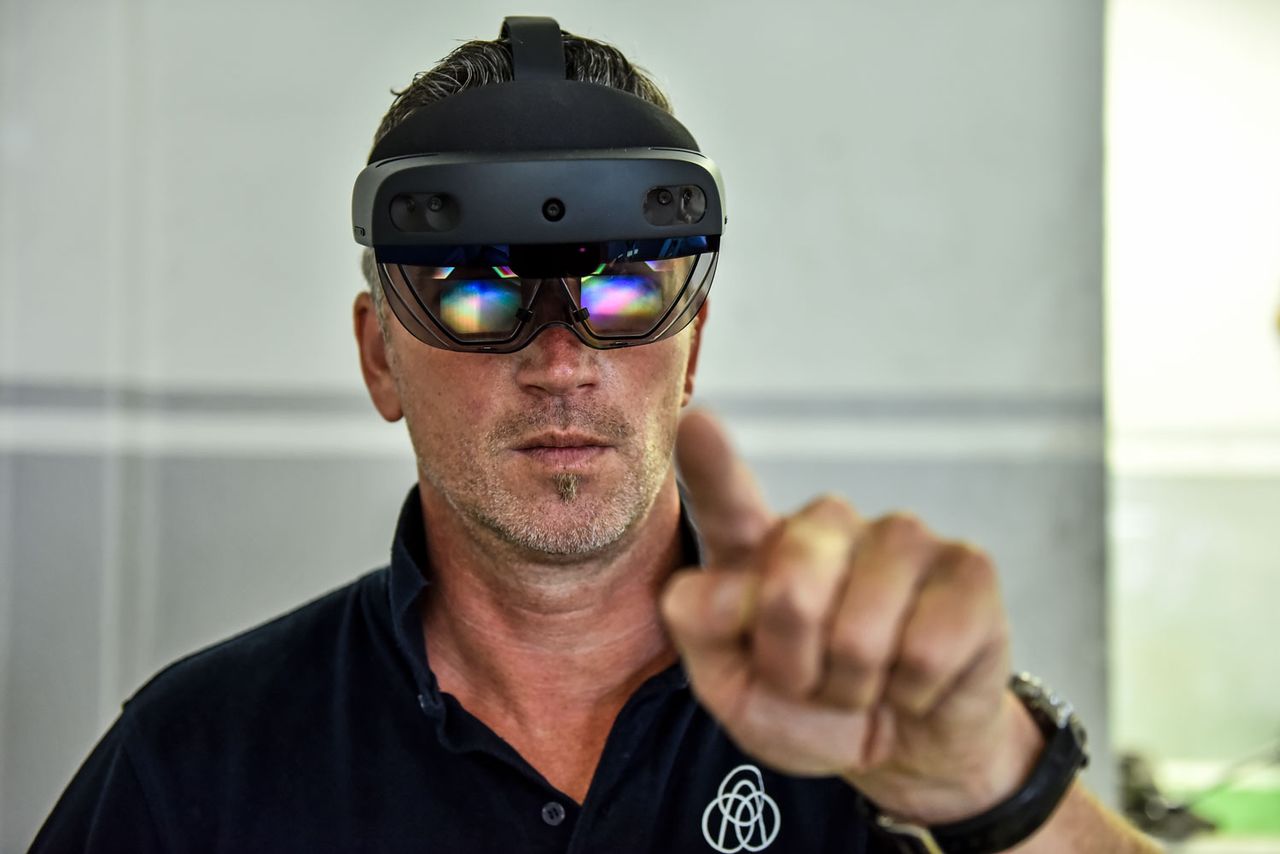How smart glasses extend reality in submarine construction
HoloLens augmented reality glasses integrate virtual objects such as texts, visuals, or videos in the “real world environment” and extend the physical world by enriching it with additional information. At thyssenkrupp Marine Systems we are already using the HoloLens in submarine construction. "What we are seeing here is the beginning of a revolution in how ships and submarines will be built in the future," Stefan Lengowski Senior Project Engineer (PLF) at thyssenkrupp Marine Systems tells us.
Time-consuming drawings are a thing of the past
In submarine construction more than a million individual moving parts have to perfectly constructed and adjusted to ensure safety for the crew and excellent performance of the final submarine. Conventionally, it took years to complete a single boat. U-31, for example, took eight and a half years from keel laying to commissioning.
By integrating augmented reality glasses, such as Microsoft’s HoloLens, construction times of such a long span will become a thing of the past. Because the holo-glasses show exactly where parts belong and how the construction should be performed – right in our technicians’ field of vision. Saving an enormous amount of time. "Almost everyone is happy to work with the glasses, because it makes the work so much easier", Lengowski shares his experience with the glasses.

Augmented reality glasses are easy to use
The holo-glasses are put on like a helmet. Four cameras in the front scan the surroundings. With the help of hand gestures, the user navigates through the menus and can display additional info. There is no need to put work on hold and flip through endless pages of manuals or printed 2D technical drawings to find a specific piece of information our technician needs for a particular step. Instead, the smart glasses enable a seamless flow of information making work so more intuitive and easier for everyone involved.
Using the HoloLens at thyssenkrupp Marine Systems
At thyssenkrupp Marine Systems, the HoloLens smart glasses are currently used, among other things, to check completion status or mark welded parts for submarines. With the help of these glasses, the user has access to the geometric representation of the 3D CAD model superimposed in the field of vision, but also information such as position numbers or spatial coordinates. “It’s certainly still pioneering work, but the breakthrough has been achieved. Digitalization can be experienced here and now, “says Lengowski.
The system also visualizes in colour which parts are still to be marked, which have already been marked and, in case of changes, which parts are new, and which must be moved. The internal development team is constantly working to make the software more resilient and adaptable and to meet additional request regarding the software.

